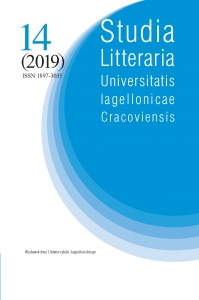Od książki ilustrowanej do książki obrazkowej. Rola ilustracji w przekładzie Domowych duchów Dubravki Ugrešić
From the Illustrated Book to the Picture Book. The Role of Illustrations in the Translation of Kućni duhovi by Dubravka Ugrešić
Author(s): Magdalena ŚlawskaSubject(s): Visual Arts, Croatian Literature, Polish Literature, Translation Studies, Theory of Literature
Published by: Wydawnictwo Uniwersytetu Jagiellońskiego
Keywords: children’s literature; Dubravka Ugrešić; illustrated book; picture book; Ilona Chmielewska; Yugoslavia; Dutch and North European painting;
Summary/Abstract: This paper focuses on the illustrations appearing in the Polish edition of the Kućni duhovi by Dubravka Ugrešić. Hardly anyone remembers that this world-famous Croatian writer made her debut as a writer for children (Mali plamen, 1971; Filip i srećica, 1976). Unfortunately, these texts are almost unknown outside of Croatia. Only the collection of stories Kućni duhovi from 1988 has been translated into foreign languages. The author of the Polish translation is Dorota Jovanka Ćirlić, while the graphic design was created by Iwona Chmielewska, one of the most titled and recognizable Polish illustrators in the world. In her works, Chmielewska used many elements evoking socialist Yugoslavia. The Yugoslavian banknotes and coins, logos and labels, posters of musical bands and characters associated with this geographical area appearing in the illustrations were combined with Dutch and North European painting. Thanks to this, the pictures created by Chmielewska not only illustrate the content of the work, but they can also be read as a separate story – a kind of visual biography of Ugrešić, which consists of images from before the break-up of Yugoslavia and life in exile in the Netherlands. In this paper, I show that we are also dealing with a change of the ontological status of the book in the Polish edition of Kućni duhovi. Both the Croatian and Serbian editions are examples of illustrated books where basic communication code is text, while the image is only an illustration of the content. On the other hand, a picture book has been given to Polish readers, in which the text and image play an equal role.
Journal: Studia Litteraria Universitatis Iagellonicae Cracoviensis
- Issue Year: 14/2019
- Issue No: 4
- Page Range: 289-307
- Page Count: 19
- Language: Polish

